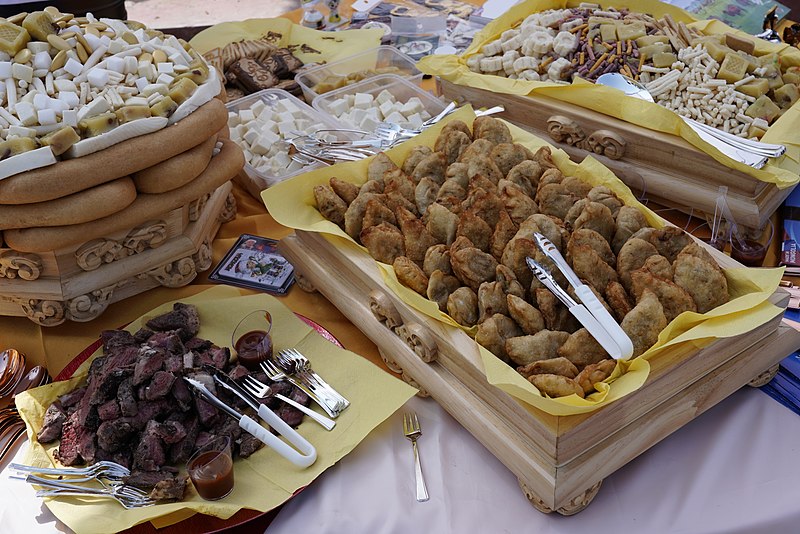What Are The Popular Mongolian Foods?
Mongolia has quite the unique foods available for anyone looking to dine. Mongolian Barbecue and Grills are probably the most well-known dishes out there. But if you think it stops there, we have a list to surprise you.
Tarag: Mongolian Yogurt
Tarag is a Mongolian yogurt that differs slightly from what you would expect to buy from your local supermarket. Just as how there is a slight difference between regular and Greek yogurt.
The best thing about Mongolian yogurt is that you can find a homemade version of it in many places as well as the yogurt can be fresher. From our experience, this can be a subtle but game-changing difference.
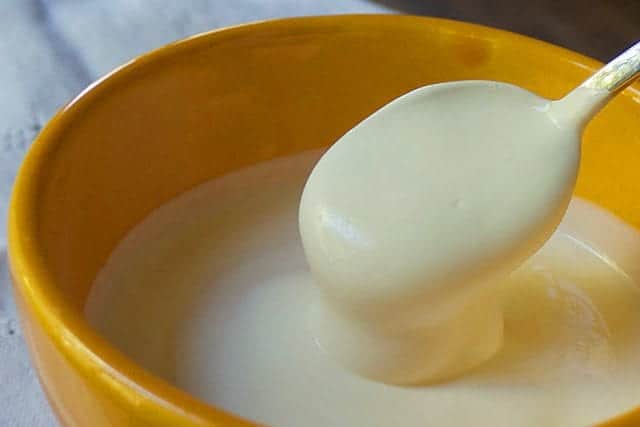
Boodog: Traditional Roasted Meat
Boodog is probably one of the most interesting dishes in Mongolia. It is usually made from goat or Tarbagat marmot which is common in Mongolia.
- Ingredients: Goat or Tarbagat marmot, potato, carrot, onion, and salt
Airag: Mongolian Fermented Milk Beverage
Airag is a popular Mongolian traditional drink they have been enjoying for centuries now. It is made from mare’s milk which might sound off-putting for some but please do trust us when we say it is something that you must try.
It can hold an appearance similar to Korean Rice Wine or even Yakult drink but do not forget that it is fermented. Airag can easily smash you if you drink it the first time without an expectation.
If you are looking to try out probably the most popular drink in Mongolia, September is the best month for you to try out this drink as herders start the fermentation process in early Summer and it naturally takes some time to reach its best form.
Budaatai Khuurga: Mongolian Fried Rice
Just like you would expect from any Asian country, Mongolians do have their version of fried rice. But contrary to Korean or Thai fried dishes with seafood, the fried rice is commonly enjoyed with mutton. Many restaurants and fast food joints offer mutton-fried rice with huge chunks of bones.
But please do not be afraid. A huge mutton chunk is the best twist you can have on fried rice. I promise that you will get the feeling you are having both Mongolian barbecue and fried rice at the same time.
- Ingredients: Mutton or beef, carrot, shallot, red/green peppers, onion, salt, and pepper

Khorkhog: Stone Roasted Mongolian Barbecue
Khorkhog is up there with boodog in terms of uniqueness. If you ever visit Mongolia, it is no lie that both Boodog and Khorhog will be the dishes that people will want you to try out most for a reason.
Khorkhog was a method of cooking that shows the very essence of the Mongolian nomadic lifestyle as the dish is roasted with hot stones inside a tightly-sealed steaming pot.
The preparation process can easily take an hour or more as the pot is sealed anywhere from 45 to 90 minutes.
Khorkhog is often enjoyed by Mongolians throughout Summer as the dish is perfect for breezy summer nights under the starry sky.
- Ingredients: Mutton, potato, carrot, onion, and salt
Tsuivan: Stir-Fried Noodles
Tsuivan is a stir-fried noodles dish that is enjoyed daily in Mongolia. It tends to be a favorite common dish of many Mongolian men as the dish is extremely filling as well as being quite a simple dish to make with a small number of ingredients which is self-explanatory why it is popular among the men
- Ingredients: Noodles, beef or mutton, onion, green/red peppers, carrot, onion, salt, and pepper
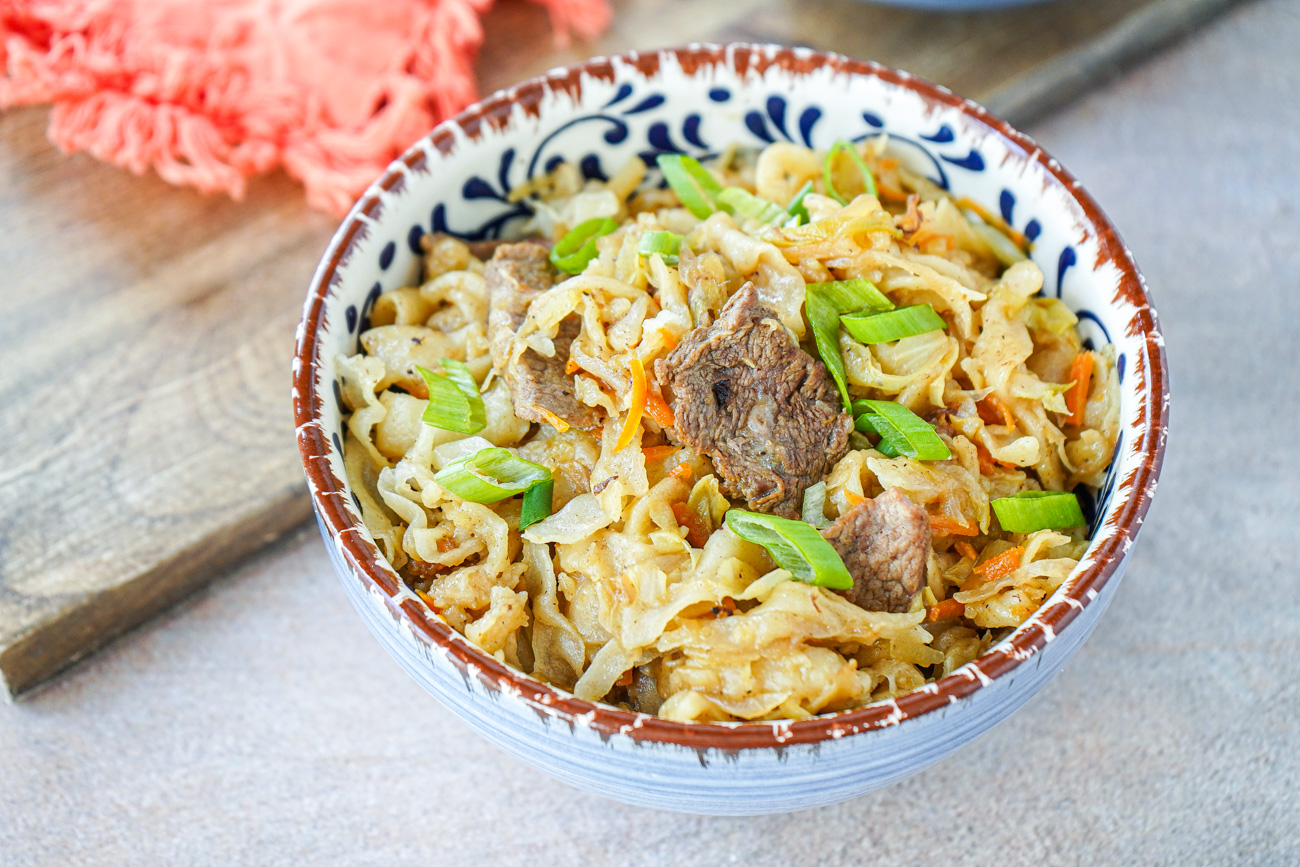
Vodka
Oh boy, the vodka and Mongolian food and drinks. Due to the long history of influence that the Soviet Union had over Mongolia, Vodka is the number one popular heavy alcoholic drink amongst Mongolians as well as being the beverage that Mongolians are best at manufacturing.
Being the favorite of many, the quality of Mongolian vodka is prominent among mixology and beverage experts. We believe that Mongolian vodka is comparable to Finnish vodkas which are internationally renowned in quality.
While the custom is getting hushed over recent years, vodka is still often called ‘Ideenii deej’ which roughly translates to ‘The Finest Serving’.

Milk Vodka: Shimiin Arkhi
Yep, you saw that one right. We have another vodka on the table for you. As much as being the lover of traditional vodka, Mongolians came up with their own version of vodka made from milk which is quite strange in our opinion as manufacturing the vodka from milk kinda contradicts the point vodka?
We are not sure how it goes in the minds of people who made the milk vodka but it sure does not disappoint.
MIlk Vodka is more commonly enjoyed by people of the countryside probably due to them having more resources to make it at home. Milk vodka differs from regular vodka because it is not often that it gets fully packaged and sold in supermarkets.
It can easily be found if you travel to the Mongolian countryside and please do not be afraid to try it just because it does not have an ‘official packaging’. We, at Silk Road Mongolia, think Milk Vodka is more enjoyable compared to regular vodka as the aftertaste is quite mellower.
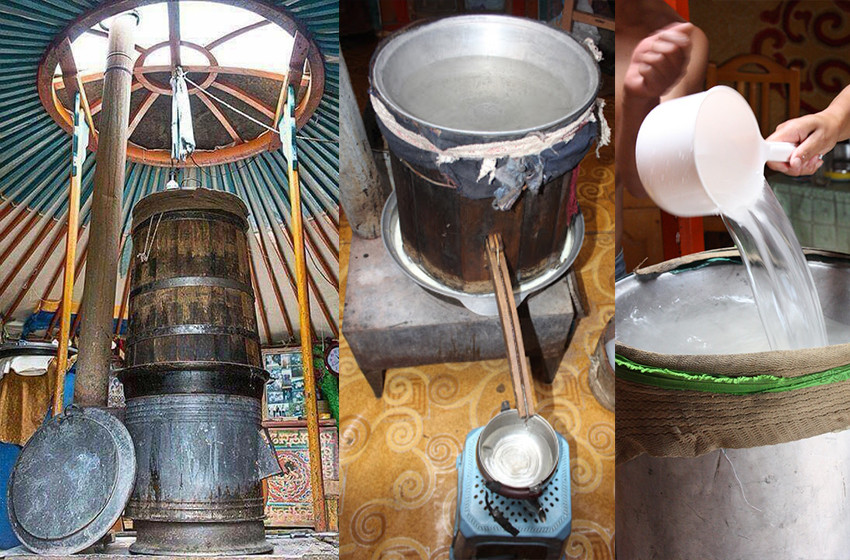
Khuushuur: Fried Dough with meat filling
Just as the Soviet Union influenced our drink options, they also had an impact on our dishes too. Khuushuur or fried dough with meat filling can be very similar to Russian or European dishes while being one of the signature dishes of Mongolia.
Especially during the National Festival of Naadam, Khuushuur is easily the most sought-after food. Almost every Mongolian can be found enjoying this food with their slight variations according to their taste such as having a different filling rather than meat.
- Ingredients: Flour, mutton or beef, onion, salt, and pepper
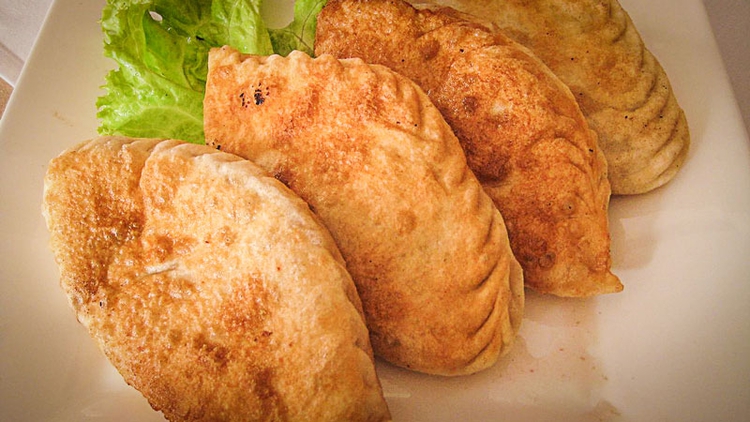
Buuz: Steamed Dumplings
Buuz is the Mongolian steamed dumplings. For people who are aware of ‘Baozi’ – the Chinese dish enjoyed by many, indeed the buuz is heavily inspired by or could be even said to be a slight variation of baozi that Mongolians came up to suit their taste.
For Tsagaan Sar or White Moon National Festival of Mongolia, Buuz is certainly the dish that holds the most significance. Every family prepares Buuz before the Festival with some families preparing over 2,000s buuz for the Festival as the dish is widely enjoyed throughout this season.
- Ingredients: Flour, mutton or beef, onion, salt, and pepper
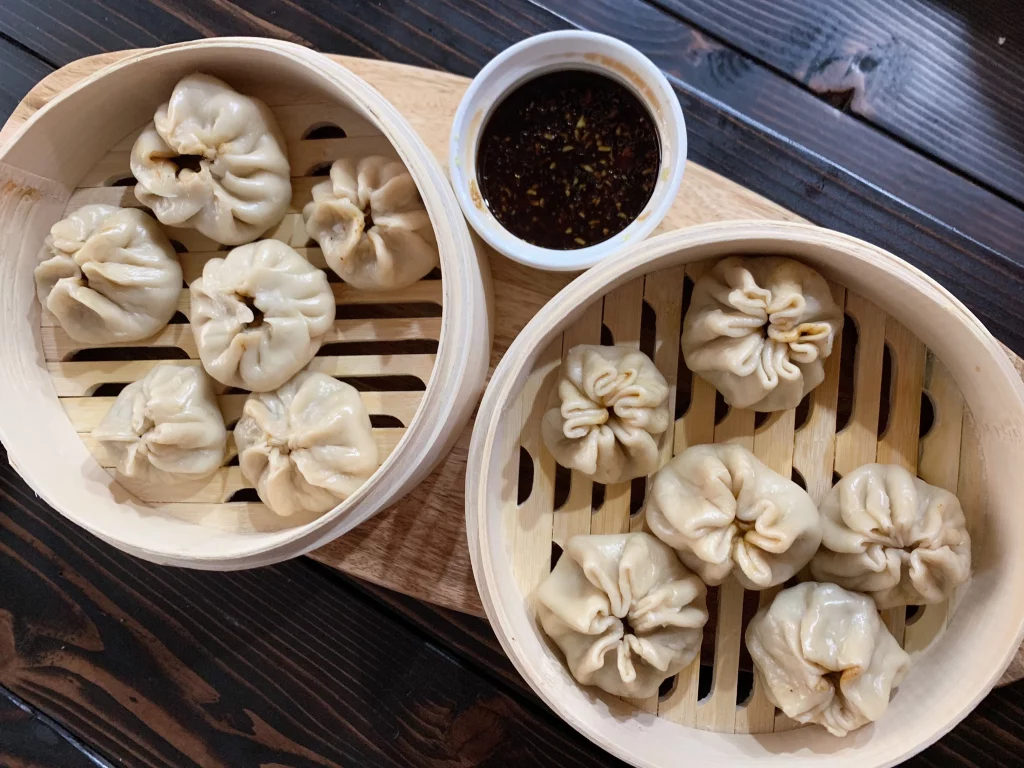
Ul Boov: Mongolian Ghee Cake
Ul Boov is another dish that cannot be separated from the White Moon National Festival. This Mongolian Ghee Cake holds more value in ceremony than it does in cuisine.
During the White Moon National Festival, the Mongolian Ghee Cake must be on a display in every household that is celebrating the festival as the number of the cake layer signifies a meaning.
Firstly, the number of layers shall always be odd as the even number means grief. Secondly, you cannot have a higher number of layers in your household than your elders. The eldest man in your blood relatives usually has 7 or 9 layers of the Ghee Cake to tell that they are filled with good and blissful things in their life while the younger household head goes with 3 to 5 layers depending on their seniority.
- Ingredients: Flour, yellow butter, sugar, and baking soda
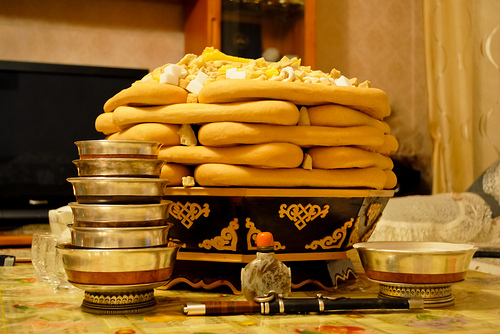
Boortsog: Fried Puff Pastry
Boortsog is a food that brings many Mongolians back to their childhood. This Fried Puff Pastry just never fails to hit that nostalgic feeling. This simple pastry is best enjoyed with milk tea.
- Ingredients: Flour, butter, sugar, and baking soda
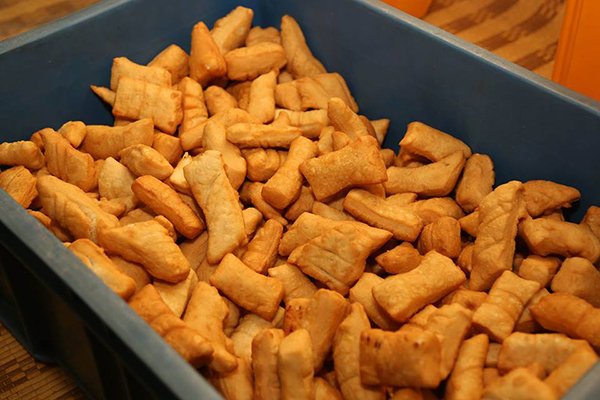
Eezgii: Fried Curd
Eezgii is a part of the Mongolian traditional snacks called ‘Tsagaan idee’. ‘Tsagaan Idee’ simply specifies the Mongolian traditional snacks made from dairies.
Eezgii has an interesting texture. Like many other Mongolian traditional snacks, it is very sturdy while being not solid. For that reason, many Mongolians tend to soak it in water or tea before enjoying it.
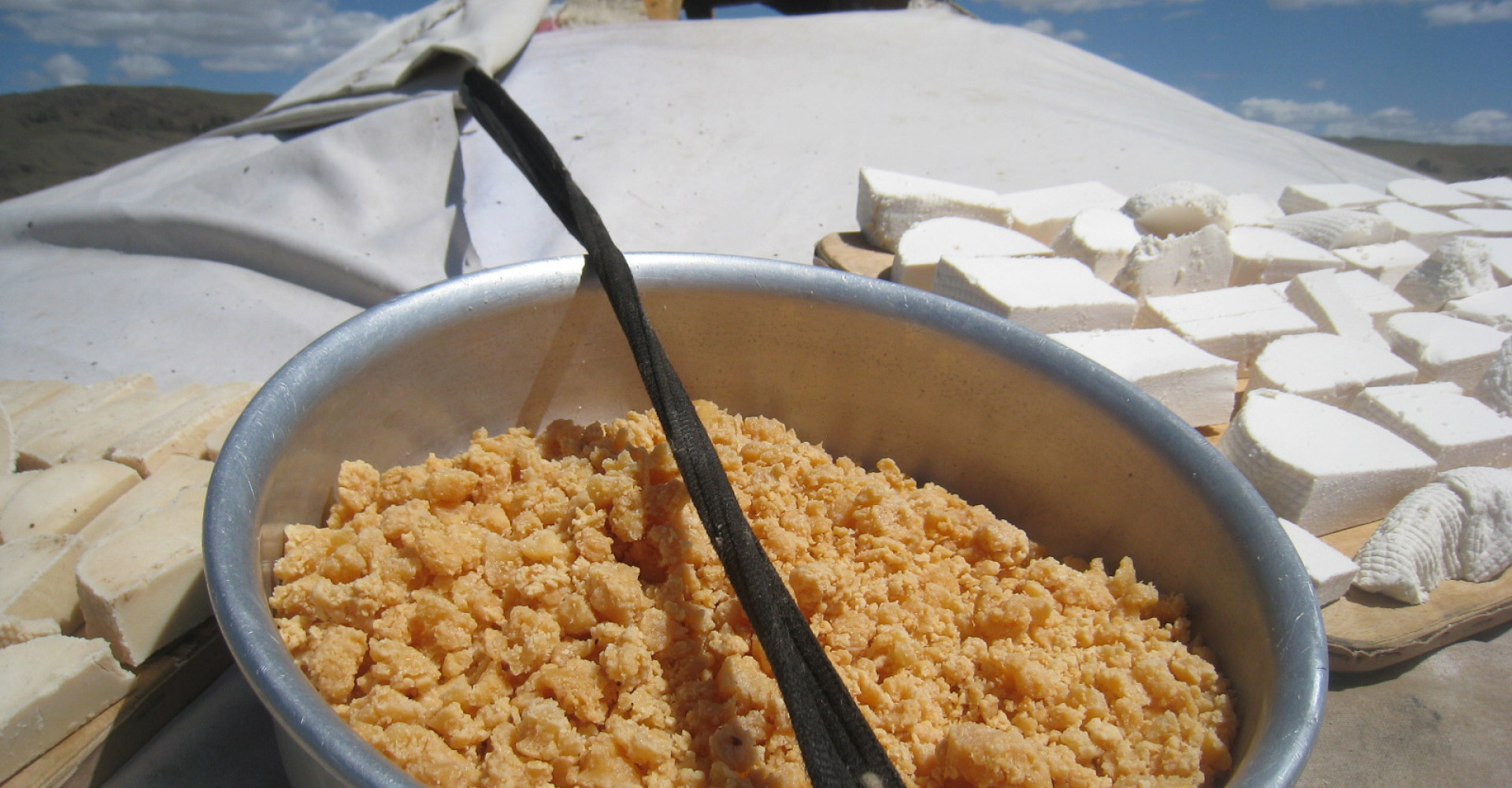
Uuts: Steamed Mutton Back
Yeah, the food that brings the topic back to White Moon National Festival. Uuts or Steamed Mutton Back holds ceremonial value to Mongolians just as the Ghee Cake does. For most people, this food is served once a year throughout the White Moon National Festival.
The fun thing is that while being the largest food on the festival table, it is actually served the least.
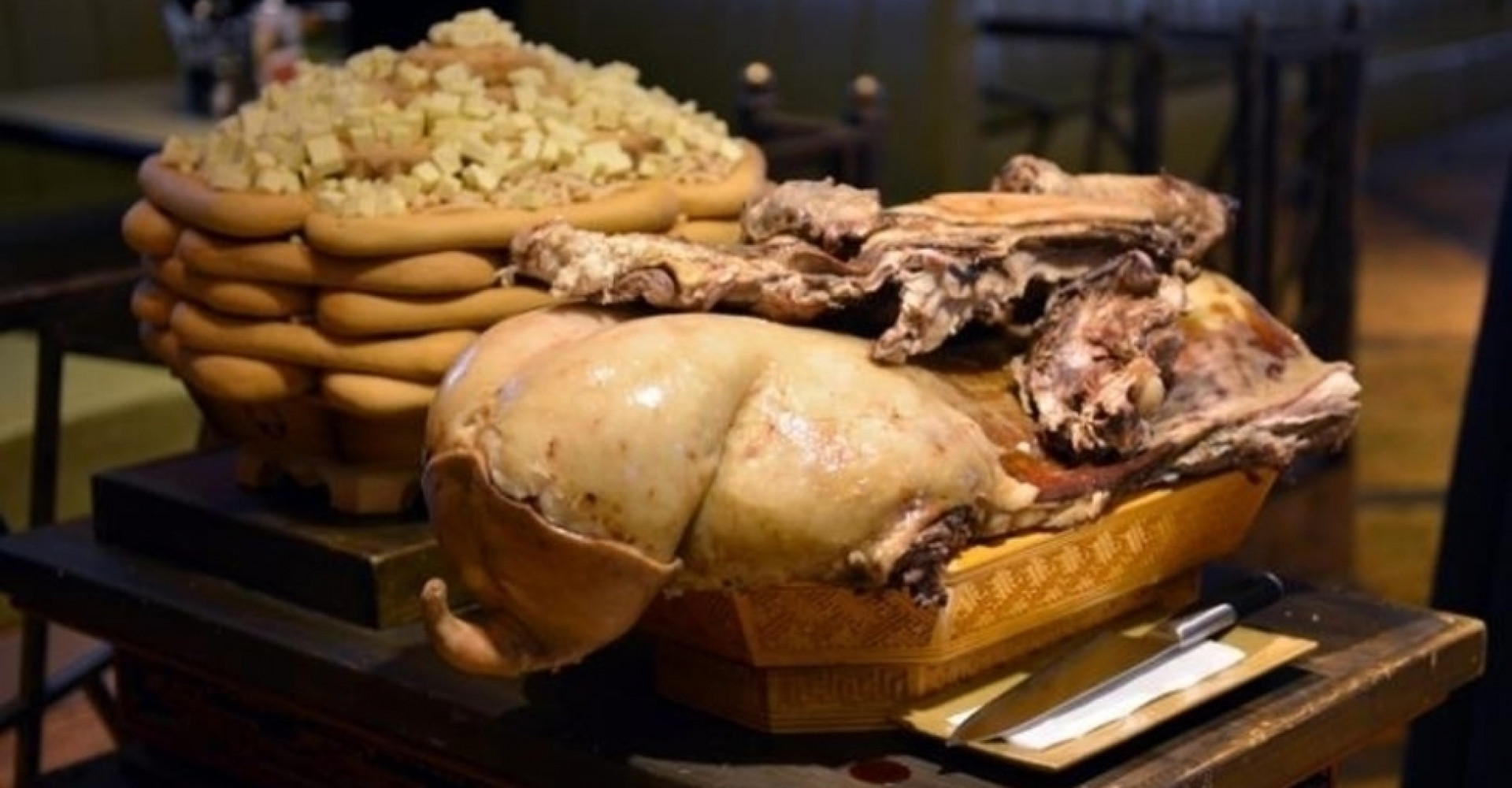
Gambir: Variation of Pancakes
This food does not need us to tell you that it is mostly enjoyed by kids or with other foods just like how pancakes are. While it is a variation of pancake, we would say it is closer to the Indian Naan or Turkish Flatbread.
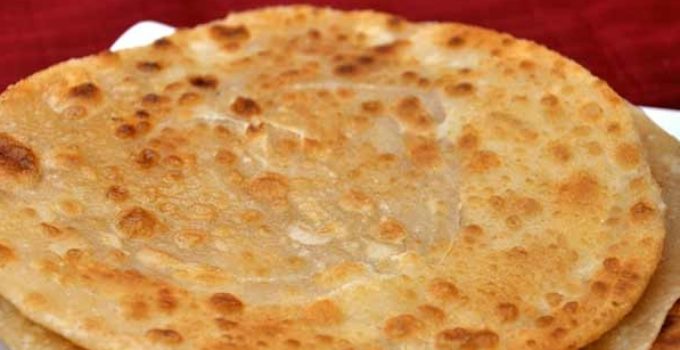
Chanasan Makh: Meat Chunks Boiled in Salted Water
The food is mostly served in the household of Mongolian herders. The making of this food is as simple as it can get which is the main reason for being the most popular dish among the meat-loving Mongolian herders.
To add some extra flowers, people tend to add potato, onion, and carrot to the mix.
- Ingredients: Mutton or beef, potato, carrot, onion, and salt
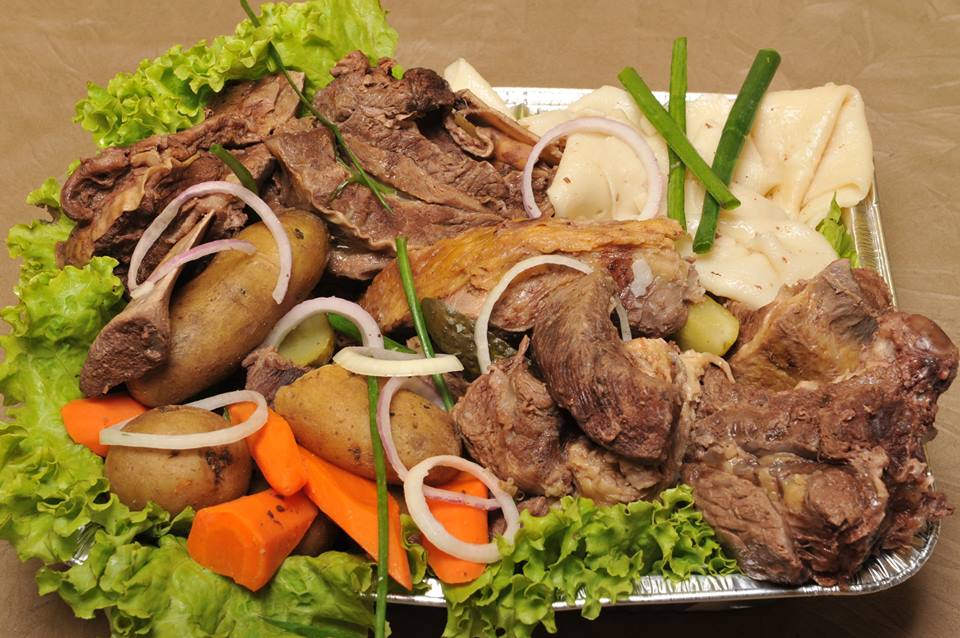
Guriltai Shol: Mongolian Mutton Ramen
This Mongolian variation of ramen is pretty close to the Chinese noodle soup in our opinion. However, instead of having a rich flavor with a variety of spices and herbs, Mongolians tend to like having it with fewer additives.
- Ingredients: Noodle, mutton, shallot, and salt

Aaruul: Dried Curds
Aaruul probably is the most common traditional snack in Mongolia. It is served and enjoyed in most households during any kind of ceremony, festival, or anniversary as the white color of the snack represents blessing and good things in life.
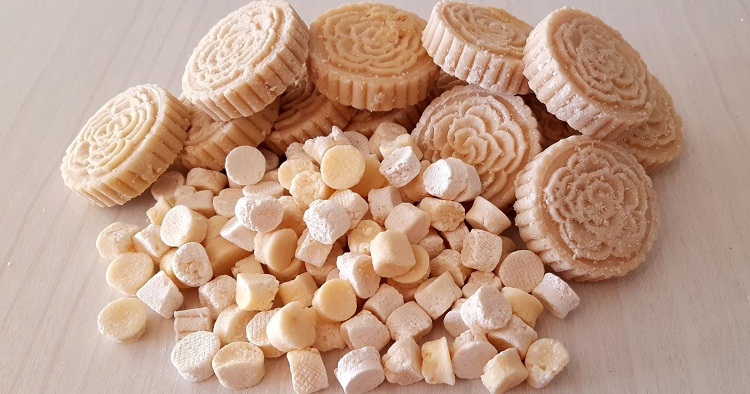
Conclusion
Mongolian cuisine has a lot to offer for adventurous people who like to try out different experiences. If you ever visit to pursue that adventure you seek, do not forget to try out Mongolian food.
However, be sure to take things in moderation as the Mongolian delicacies can be quite different and tough from your usual diet.

